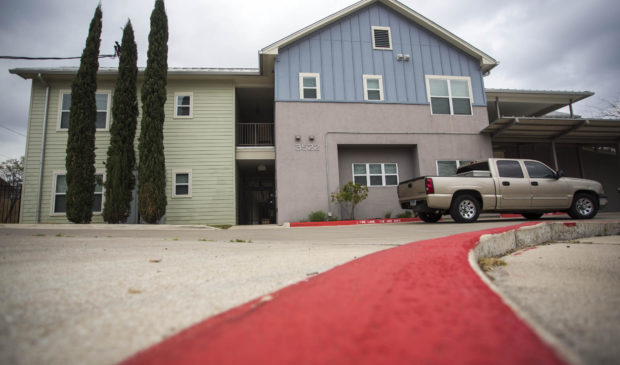Affordability plan before Council emphasizes housing needs
Tuesday, February 28, 2017 by
Audrey McGlinchy, KUT City Council members are hoping to make good on promises to create a more affordable Austin. Or, at the very least, ratify a plan to.
Council members will vote on an “affordability action plan” at their regular meeting Thursday. The measure, spearheaded by Council Member Ellen Troxclair, proposes five areas in which the local government can attack rising prices in the city: housing, transportation, budgeting, cost of living and the economy.
“I’m really excited now that we’re coming together, I think, as a community and as a Council to hopefully pass something that will really be a tangible road map for how we move the needle when it comes to cost of living in Austin,” Troxclair said. Sponsors of her item include Mayor Steve Adler and Council members Ann Kitchen, Ora Houston and Jimmy Flannigan.
Of the five items in the plan, housing has perhaps garnered the most attention recently. Affordable housing made up much of the mayor’s State of the City address earlier this year.
“If we’re going to change in a way that promotes affordability the Austin way, first we’re going to have to have a clear-eyed talk about housing and housing supply,” Adler said. “Where we build it, where we preserve it, where we keep it affordable, and how we make it easier to remodel and to build the housing stock we need.”
In that speech, Adler set a goal for the city of building 135,000 additional housing units, or 13,500 units per year, over the next decade. Although that exact number has been removed from the current draft of the affordability plan, the goal to build additional housing remains.
“We want to have aggressive goals to make sure that we’re building enough housing in the city to keep up with demand,” Troxclair said.
Adler’s figure is not too far off from the current rate, although comprehensive numbers are limited. According to Austin Investor Interests LLC, the city added 10,093 additional apartment units in 2016. (The firm counts units only in complexes with at least 50 apartments.) The company said the city is on track to add the same amount this year.
As for how the city should continue to build more housing, the affordability plan emphasizes reform of the city’s permitting process and adopting a new land development code that makes construction of new housing easier. The first draft of this code came out in January.
Another proposed tool is to leverage city-owned property for affordable housing – a mechanism that, in the past, has not produced much housing. In 2000, the city passed an ordinance that included requiring any surplus city land to first be evaluated for housing use.
According to city staff, over the past decade the city has been able to turn eight plots of unused city land into affordable housing, totaling just over 900 units. Franklin Gardens in East Austin opened in 2011, for example. Once city property, the land now holds 22 housing units for low-income seniors.
“Conditions have to be right for it,” said David Potter, who works in the city’s neighborhood development program. “You’ve got to have the property, you’ve got to have somebody with a development concept, then the funding to build it. So all of that stuff has to come together.”
The affordability plan also includes asking city staff to present Council members with a budget that does not include an increase in utility fees or property taxes, and asking the Capital Metropolitan Transportation Authority to consider offering free rides to seniors and those with disabilities.
Photo: Franklin Gardens, city-owned property near E.M. Franklin Avenue and East Martin Luther King Jr. Boulevard, was turned into affordable housing units for low-income seniors. GABRIEL CRISTÓVER PÉREZ/KUT. This story was produced as part of the Austin Monitor’s reporting partnership with KUT.
The Austin Monitor’s work is made possible by donations from the community. Though our reporting covers donors from time to time, we are careful to keep business and editorial efforts separate while maintaining transparency. A complete list of donors is available here, and our code of ethics is explained here.
You're a community leader
And we’re honored you look to us for serious, in-depth news. You know a strong community needs local and dedicated watchdog reporting. We’re here for you and that won’t change. Now will you take the powerful next step and support our nonprofit news organization?









